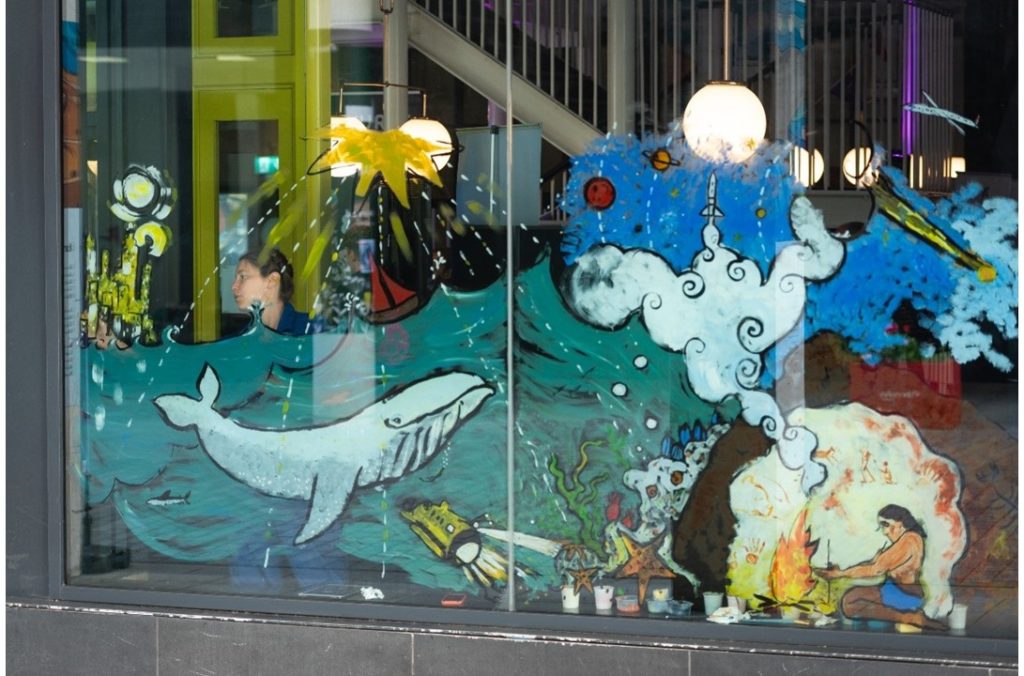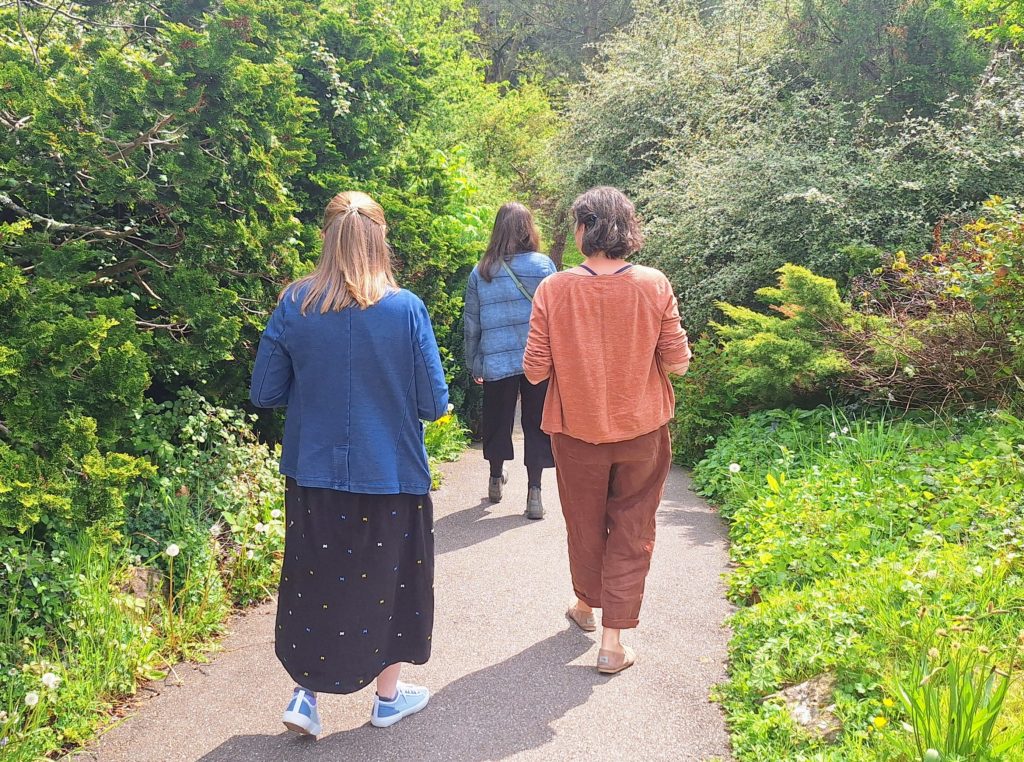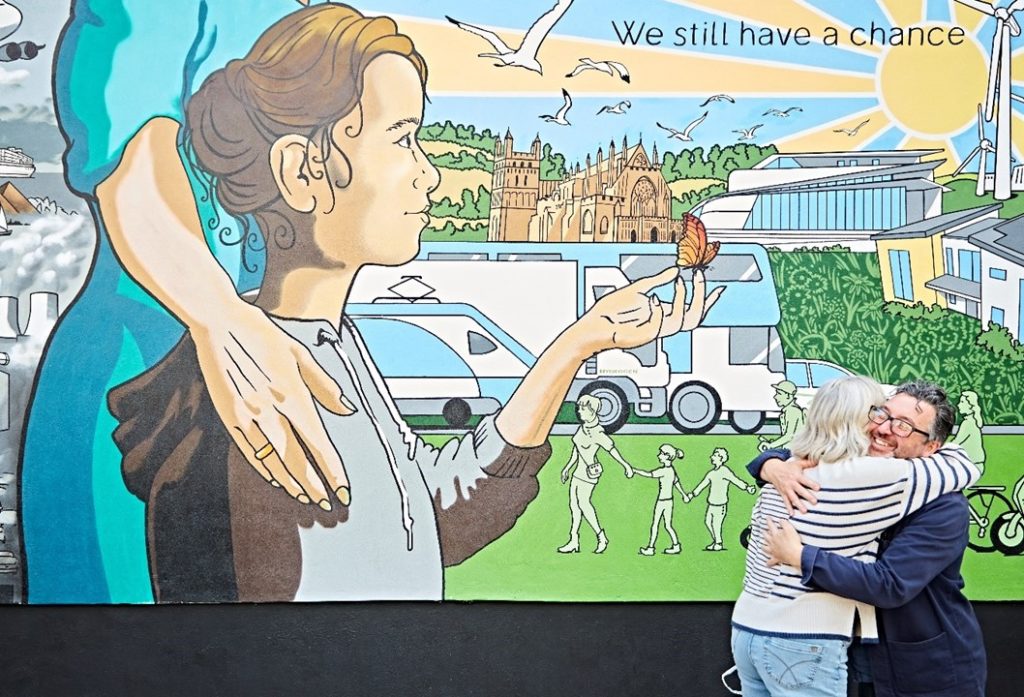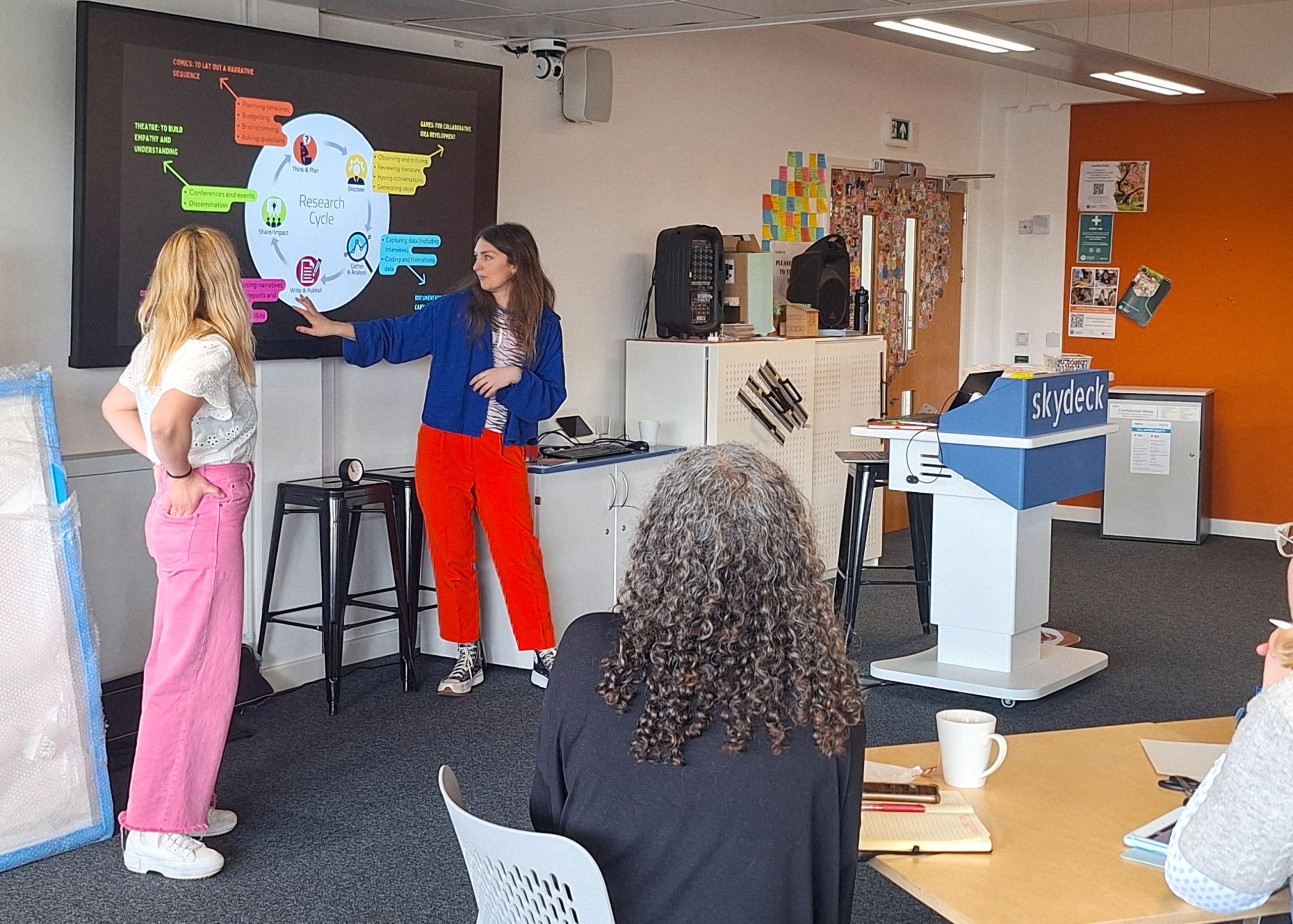Working with artists and creatives forms an important part of our work in Public Engagement with Research. Whether it’s celebrating Exeter’s murals, or offering training on creative approaches to research, art forms a pivotal role in bridging the gap between academia and local communities.
Creative media is something we are all exposed to on a regular basis, through TV and films, literature, music, and even children’s drawings. However, to many, academic research remains somewhat alien, particularly to those who are not from a Higher Education background. Art provides a route to unite these two disciplines, providing benefits for both: examining research through an artistic lens can offer researchers new perspectives on their work, and can make academia more accessible to wider audiences.

Educational festivals are a key example of how art can be used to this effect. The 2024 FUTURES Festival saw a range of art pieces on display, from Josephine Birch’s weekend-long mural, to the collaborative mossy carpet project. These pieces moved away from traditionally academic research displays, while retaining a strong connection to the work that inspired their creation. A similarly creative highlight of this festival was the ‘We Still Have a Chance’ mural, commissioned by the University of Exeter’s Green Futures team, and Art Work Exeter, which was seen by over 2500 people across the festival weekend. By creating a visual representation of Exeter’s connection to climate research, the mural team were able to reach new members of the community, and cultivate a personal connection to their subject matter.

There are a multitude of ways in which academics can bring creative methods into their research and its dissemination. Recently, the PER team had the opportunity to work with Hannah Mumby, artist and workshop facilitator, and creative researcher Ella Harris, to deliver an arts-based research workshop that offered academics the chance to explore these artistic approaches. Using a combination of case studies and hands-on activities – including blackout poetry, and a photography walk – the training highlighted the value of art in the research space.

We have been privileged to work with a wide range of academics who use art to foster connections to their researchers. Collaborative projects, such as the MRC Centre for Medical Mycology’s work with Exeter College textile students, and last year’s ‘Our Neurodivergent Experience’ art showcase, have received PER funding to help support their efforts. Keep an eye out on our blog, social media, and monthly newsletter to see more of this work going on around the University!

